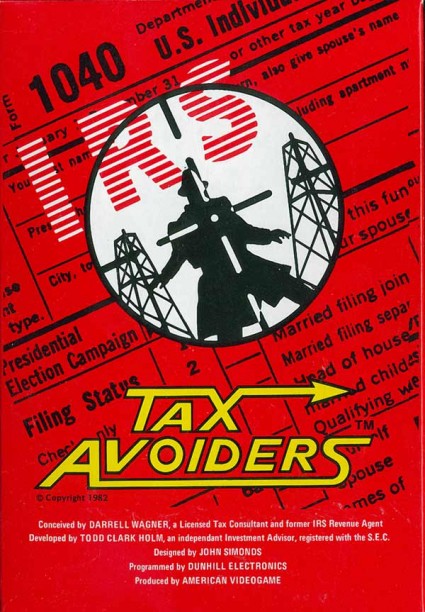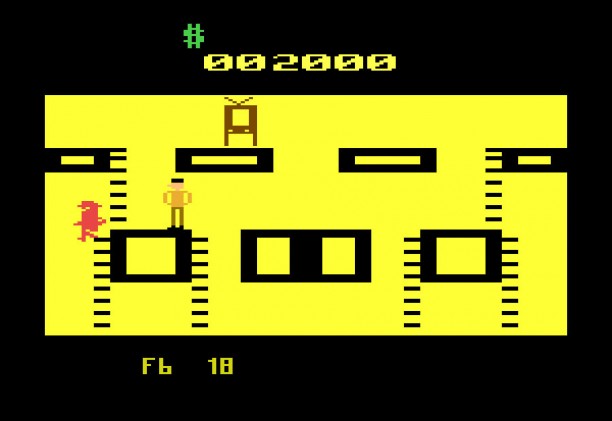
Atari Poop
Atari Poop – Tax Avoiders
Tax Evader, a 1982 “video game”, was meant to be a propaganda tool for the I.R.S.and was created with the help of the C.I.A. It totally backfired.
So in 1981, the I.R.S. approached Atari and the C.I.A. to discuss making a video game for the console that would help them in the goal of curbing the rate of tax evasion. All the parties agreed to the inclusion of subliminal messages and other mind control techniques within the game. The I.R.S. tasked one of their agents, Darrell Wagner (whose name is an anagram for “drawl enlarger,” which isn’t relevant at all, just weird), with coming up with the basic design of the game (i.e., what it should look like and how it should play). The C.I.A. had one of their mind control experts work on the game; however, he is credited under a false name, Todd Clark Wolm, and mistakenly listed as a “independant Investment Advisor” (the mistake isn’t the title, but its spelling).
I mentioned earlier that the plan to use mind control to stop people from avoiding having to pay taxes backfired. This is because the person who actually programmed the game was John Simonds for Dunhill Electronics. The game was produced by American Videogame. We’ll get back to these entities later.
What about the game itself? The graphics, as you’ll see below, are fairly standard as far as the 2600 is concerned, as are the sound effects, though I do enjoy the noise produced when your character falls down the elevator shaft.
Your general goal is to make 1 million dollars before the end of the year. The gameplay has two parts. First, you need to collect all of the flashing dollar signs, each of which give you two thousand dollars. They are located on four floors divided into two through the middle of your screen by an elevator in constant motion that is completely invisible unless you happen to be standing on it. On these four levels, you must also avoid any red tape, represented quite literally by red tape. Failure to do so results in you losing two grand. All of these objects are flashing in a way that makes them visible, but only kind of. It’s highly annoying.
The second part is a different level where a man runs around chasing. He keeps changing colour. When he’s black, he’s an I.R.S. agent. Touching him means you get audited lose half your money, and immediately go back to the first level. The man also changes green and pink, representing when he’s a certified public accountant and an investment advisor. Touching him when he is either of these colours will make certain items appear which, when grabbed, increase your money dramatically. In essence, the CPA charges you a fee, but you get to have tax shelters for your investments, while the advisor helps maximize your income in those tax shelters.
After a while, or when the tax man gets you, you go back to the first level, then back to the second, and so on until you have a million dollars or your time runs out (represented by a calendar of sorts where “ja 1” means January 1st, “fb 19” means February 19th, etc).
If all of this sounds like the exact opposite of a game meant to stop people from not paying taxes, you’d be 100% right. You see, the person who actually programmed the game, Darrell Simonds, had actually been audited by the I.R.S. before, so he took it upon himself to get his revenge via this very video game. He used all of the techniques explained to him by the C.I.A. and used them to promote the completely opposite goal the I.R.S. had intended. The flashing objects, the sound effects, the level design: All of it done to perfection with the result of having the people who played the game not become averse to avoiding paying taxes at all, but rather become experts at it. Don’t believe me? Look up the name of the person who holds the record speed run in this game. All the information I found pointed to a Boston resident going simply by the initials W.M.R. I’ll let you folks figure out who this person may be.
Finally, for those of you wondering how the I.R.S. and C.I.A. reacted to having been played for the fools, here’s your answer: None of the people or companies involved (other than Atari) ever made another video game.

